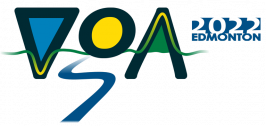Program
Main Topics
- Infrared and near infrared absorption and vibrational circular dichroism (VCD)
- Raman and Raman optical activity (ROA)
- UV-Vis absorption and electronic circular dichroism (ECD)
- Theoretical chiroptical studies (post-HF, DFT, CP, MD, QM/MM/Continuum)
- Molecular rotational resonance (MRR) and other complementary techniques
VOA7 will run similarly to the previous ones: a welcome reception (evening, Aug 7), a conference social outing (afternoon, Aug 10) and dinner (Aug 10), and oral and poster presentations on Aug 8-10 and in the morning of Aug 11.
Invited Speakers
TBA 2022 Philip J. Stephens Award Presentation
Guojie Li 2020 Philip J. Stephens Award Presentation
The International Steering Committee is excited to announce the winning paper of the 2020 Philip J. Stephens Award and to congratulate all of its authors: Guojie Li, Dr. Jiří Kessler, Joseph Cheramy, Dr. Tao Wu, Dr. Mohammad Reza Poopari, Prof. Petr Bouř and Prof. Yunjie Xu “Transfer and Amplification of Chirality Within the “Ring of Fire” Observed in Resonance Raman Optical Activity Experiments” Angew. Chem. Int. Ed. 2019, 58, 16495-16498.
João M. Batista Jr. (UNIFESP-ICT, Brazil): “Facilitating stereochemical analysis of natural products: a quest for VOA spectral markers”
Martin Brehm (Martin-Luther-Universität Halle-Wittenberg, Germany) “Computing Bulk Phase VCD and ROA Spectra from ab initio Molecular Dynamics Simulations”
Shunai Che (Shanghai Jiao Tong U., China) “Chiral Mesostructured Inorganic Materials with Various Chiral Anisotropy”
Emilio J. Cocinero (U. of the Basque Country, Spain) “Microwave and laser spectroscopies as a tool for chiral discrimination”
Reinhard Doetzer (BASF, Germany) “Rotational Spectroscopy (FT-MRR) in Industrial Analysis”
Sérgio Domingos (University of Coimbra, Portugal) “A rotational perspective on the recognition problem for chiral molecules”
Wybren Jan Buma (University of Amsterdam, Netherlands) “Good Vibrational Circular Dichroism on Bad and Ugly Molecular Systems”
Agnieszka Kaczor (Jagiellonian U., Poland) “Vibrational Optical Activity as a Unique Tool to Study Biological and Artificial Supramolecular Systems”
Marco Fusè (Scuola Normale Superior, Italy) “Computational Tools for VCD Analysis”
Jan Helbing (U. of Zurich, Switzerland) “UV-Labelling Instead of Isotope Labelling for Transient Circular Dichroism Spectroscopy of Biomolecules”
Sascha Jähnigen (CNRS, France) “Computation of Vibrational Circular Dichroism in the Periodic Gauge”
Jiri Kessler (The Czech Academy of Sciences, Czech Republic) “Modelling of protein vibrational optical activity”
Sandra Luber (U. of Zurich, Switzerland): “Forefront dynamic methods for chiral spectroscopy in gas and condensed phase”
Christian Merten (Ruhr U. in Bochum, Germany) “Recent Advances in the Application of Vibrational Circular Dichroism Spectroscopy for the Characterization of Asymmetric Catalysts”
Valentin Paul Nicu (Lucian Blaga U. of Sibiu, Romania) “Artificial Intelligence Algorithms for Chiroptical Spectroscopy”
Joanna E. Rode (Institute of Nuclear Chemistry and Technology, Poland) “Knotty Spectroscopy of Chiral Atropisomeric Naphthalenediimides”
Reinhard Schweitzer-Stenner (Drexel U., USA) “Vibrational Circular Dichroism Spectroscopy as a Tool for Exploring Conformational Distributions of Oligopeptides”
Tohru Taniguchi (Hokkaido U., Japan) “Molecular Structural Analysis Using VCD Spectroscopy in the 2400-1900 cm-1 Region”
Pat Vaccaro (Yale, USA) “Nuclear Contributions to Dispersive Electronic Optical Activity: Vibrational Motion as a Mediator of Intrinsic Chiroptical Response”
Feng Wang (Swinburne U. of Technology, Australia) “Structure, Conformation and Chirality of Compounds Using Computational Molecular Spectroscopy”
Fan Xie (DESY, Germany) “Chiral Recognition Motif between Vicinal Diols and Diamines Revealed by Molecular Rotational Resonance Spectroscopy”
